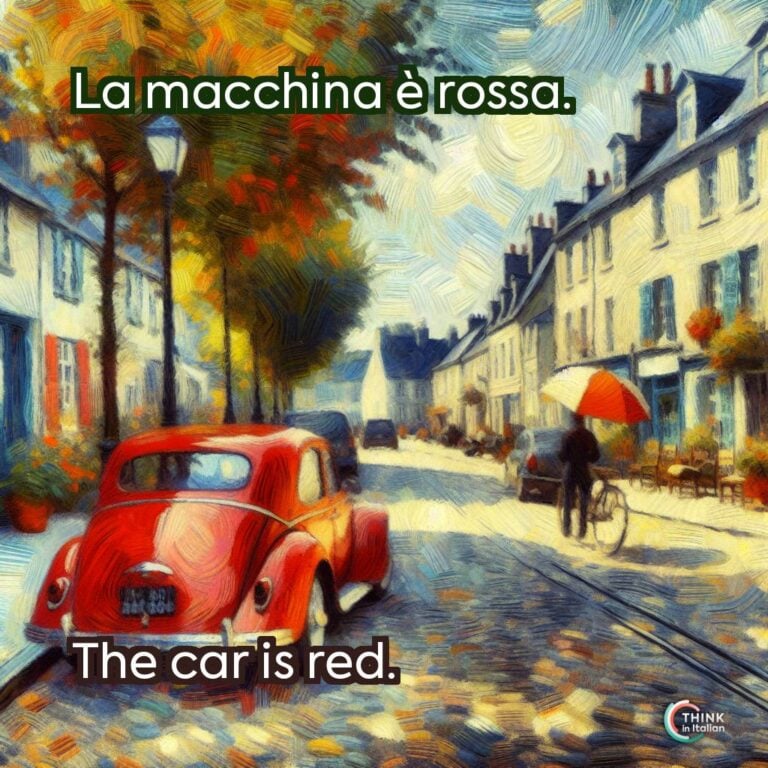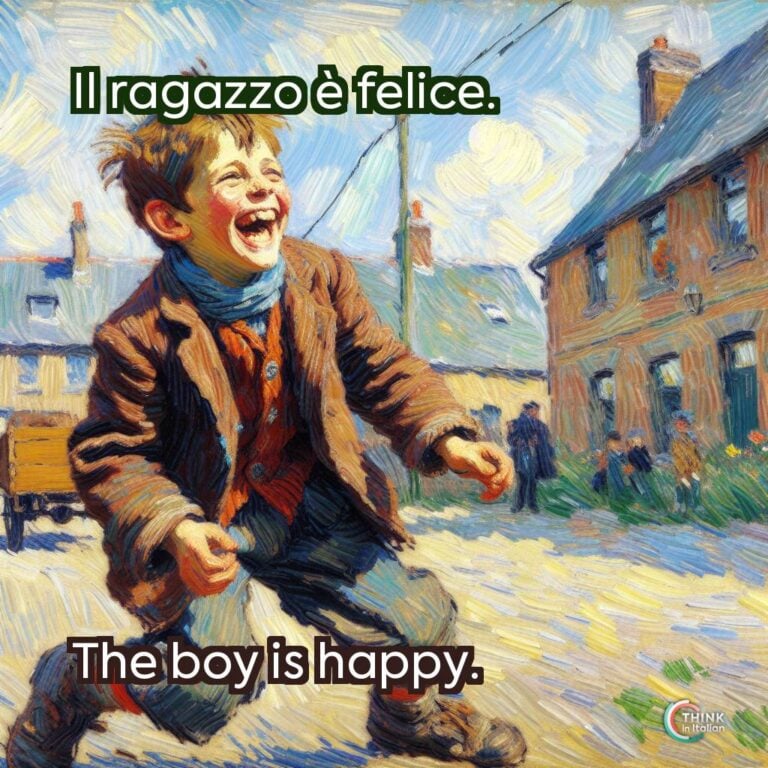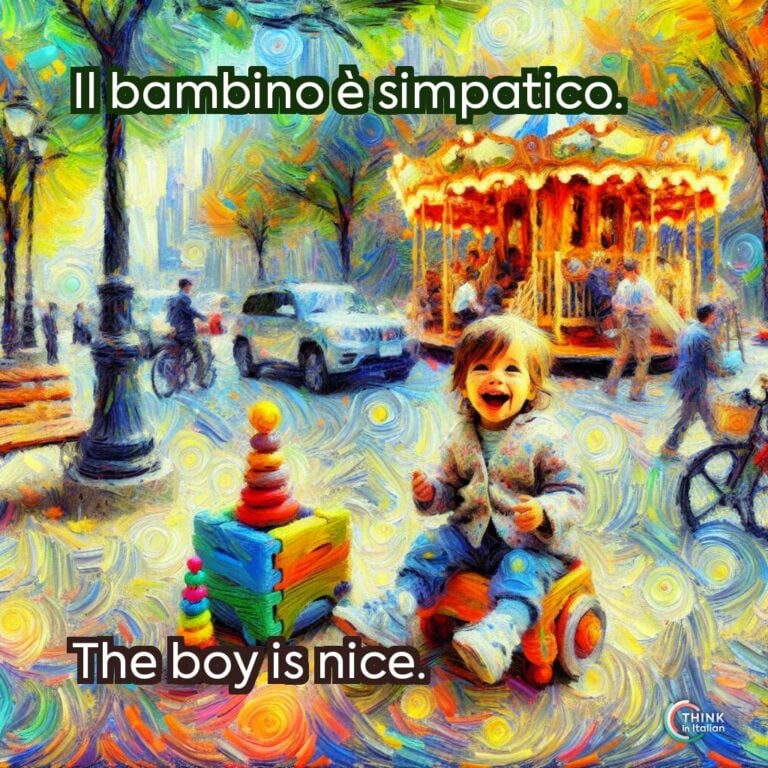Gender of Italian Nouns
Masculine or Feminine
Every Italian noun can be either masculine or feminine. This grammatical gender impacts everything: the articles – both definite and indefinite -, the adjectives, some verb conjugation forms, and the pronouns that follow.
Regular nouns in Italian follow the following patterns:
- Masculine nouns end in -o: for example il libro (the book), il ragazzo (the boy)
- Feminine nouns end in -a, for example la casa (the house), la ragazza (the girl)
Exceptions
Of course, there are some exceptions.
- Some masculine and feminine nouns end in -e: il mare (the sea), il fiore (the flower), and la luce (the light), la chiave (the key).
- The reason for these exceptions lies in the historical development of the Italian language: Italian evolved from Latin, which had a neuter gender that did not carry over into modern Italian. Many neuter nouns were reassigned as masculine or feminine, mainly based on the way they sounded.
- Not all nouns ending in -o are masculine, and not all ending in -a are feminine.
- La mano (the hand) comes from the Latin fourth-declension feminine noun manus. The feminine gender was preserved when the word transitioned into Italian, even though it conflicts with its masculine -o ending.
- Words like la radio or l’auto (the car) are shortened form of longer words (la radiotelefonia or l’automobile) which are feminine words. The gender was preserved when the nouns were shortened, despite their -o ending.
- Many words that end in -ma are Greek loanwords that were incorporated into Latin and later Italian. They often retained their original Greek endings and gender, like il problema (the problem), il sistema (the system) and il poema (the poem).
- Foreign words integrated into Italian are typically assigned masculine gender, especially those without a native Italian equivalent, like il weekend (the weekend). If there is a similar association, then the Italian gender is kept, like la chat, associated with la conversazione (the conversation).
Gender of Italian Adjectives
Masculine or Feminine
As I mentioned before, Italian adjectives must agree in gender with the nouns they describe. This means that an adjective describing a masculine noun must take a masculine form, while an adjective describing a feminine noun must take a feminine form.
Regular adjectives in Italian follow the following patterns:
- Adjectives ending in -o in the masculine singular form change to -a for the feminine singular. For example il ragazzo alto (the tall boy), la ragazza alta (the tall girl).
- In the plural, -o endings change to -i for masculine and -a endings change to -e for feminine: i ragazzi alti (the tall boys), le ragazze alte (the tall girls).
Exceptions
Of course, also here there are some exceptions. But do not worry: once you’ve learned those which apply to nouns, it’ll take no time to understand exceptions that apply to adjectives.
- Some adjectives end in -e in their singular form, regardless of whether they are masculine or feminine, and change to -i in the plural for both genders. It is very common with adjectives describing colors: il fiore verde (the green flower), i fiori verdi (the green flowers), la donna intelligente (the intelligent woman), l’uomo intelligente (the intelligent man).




